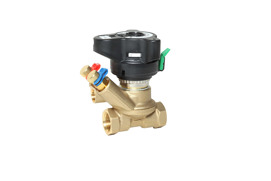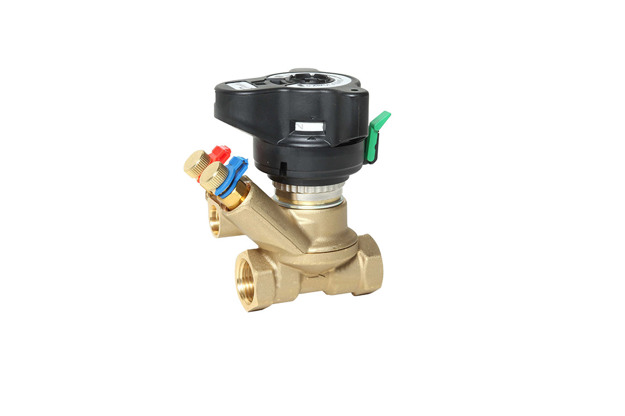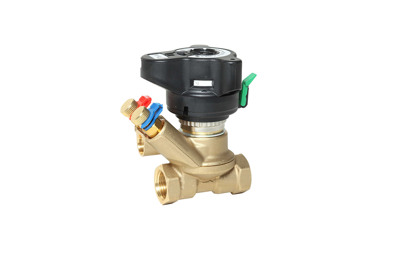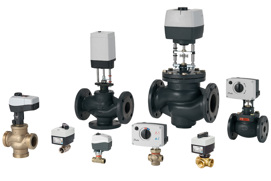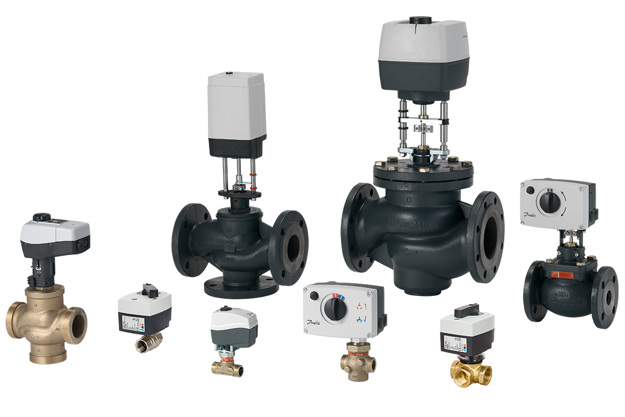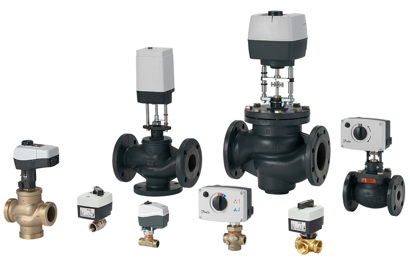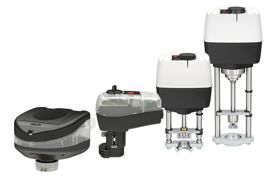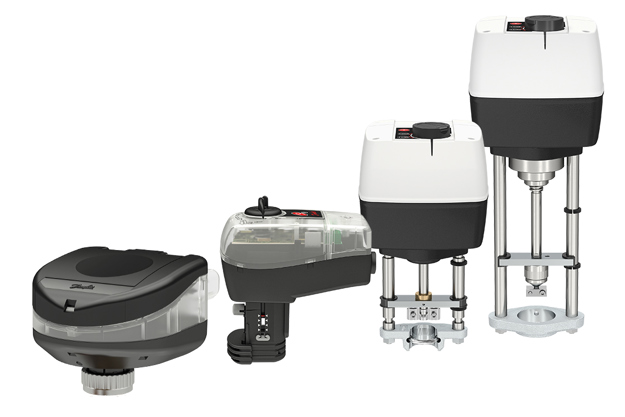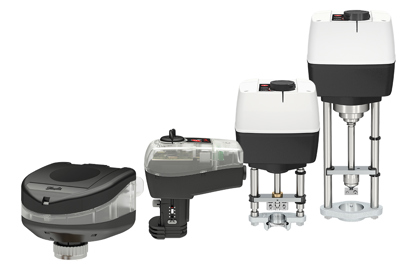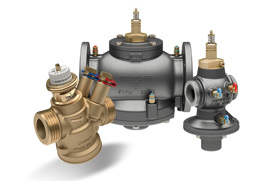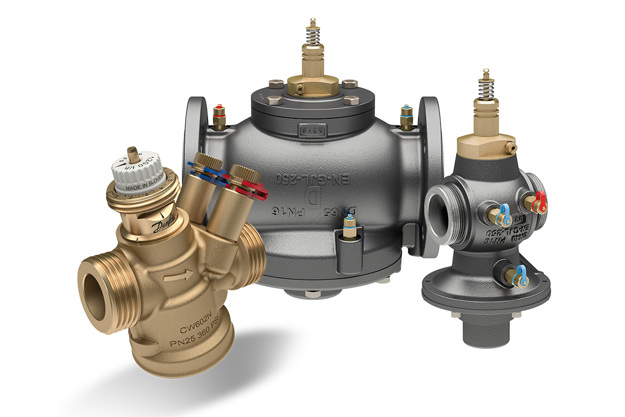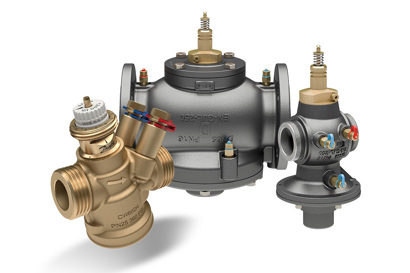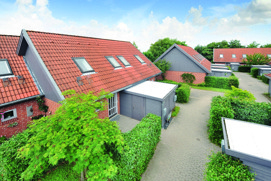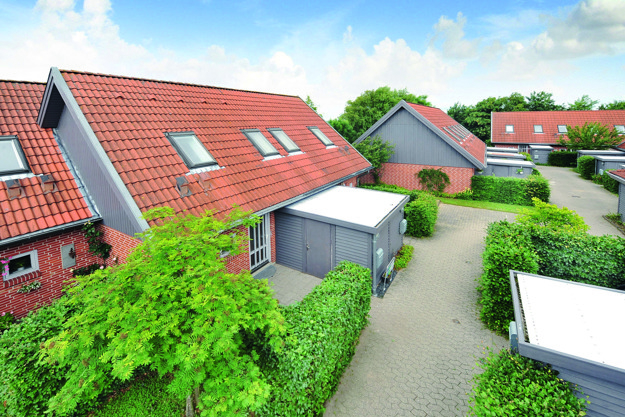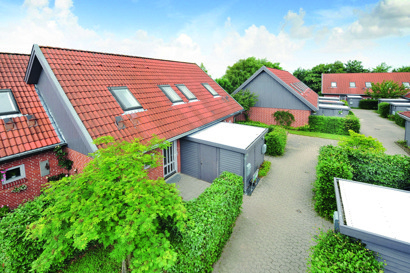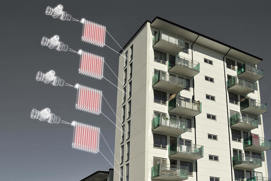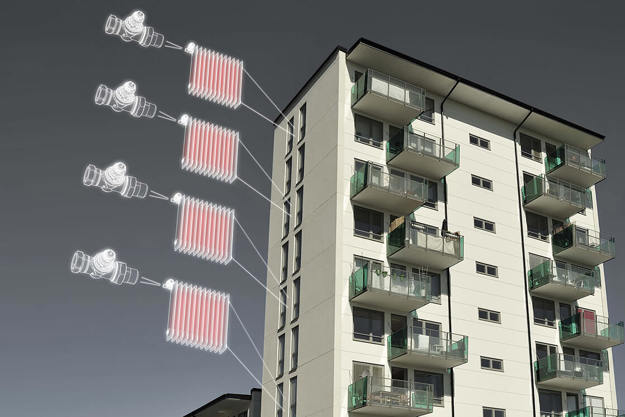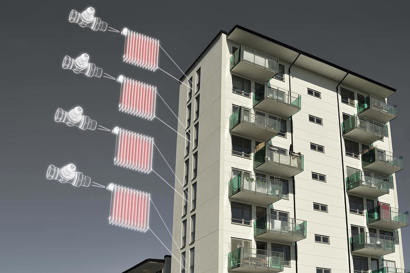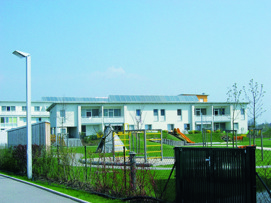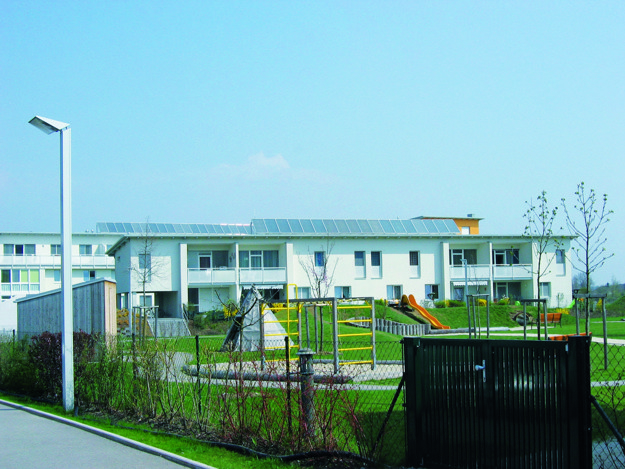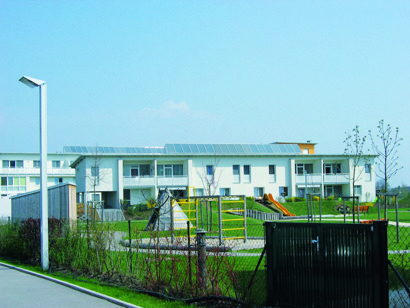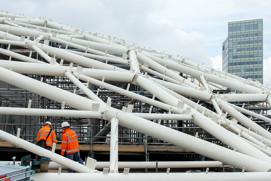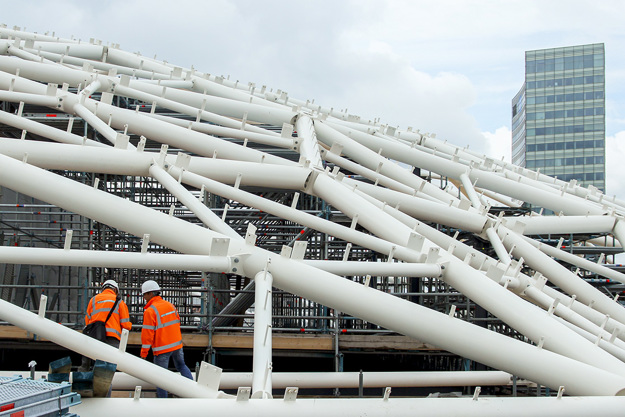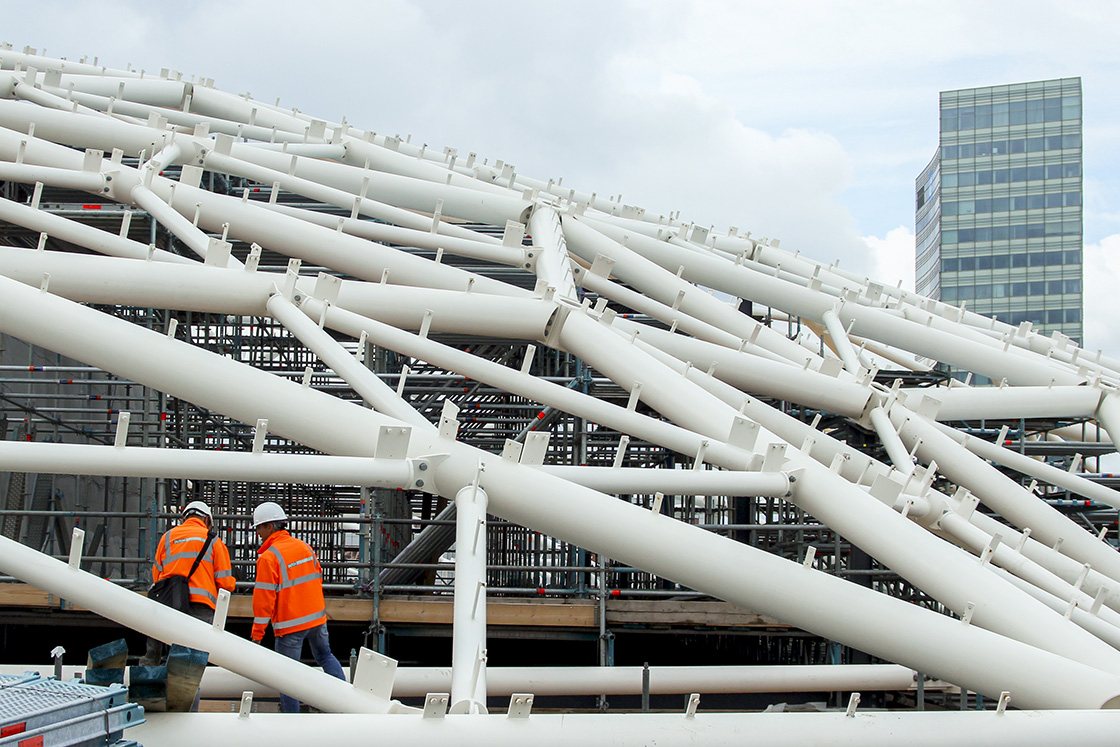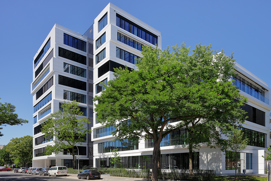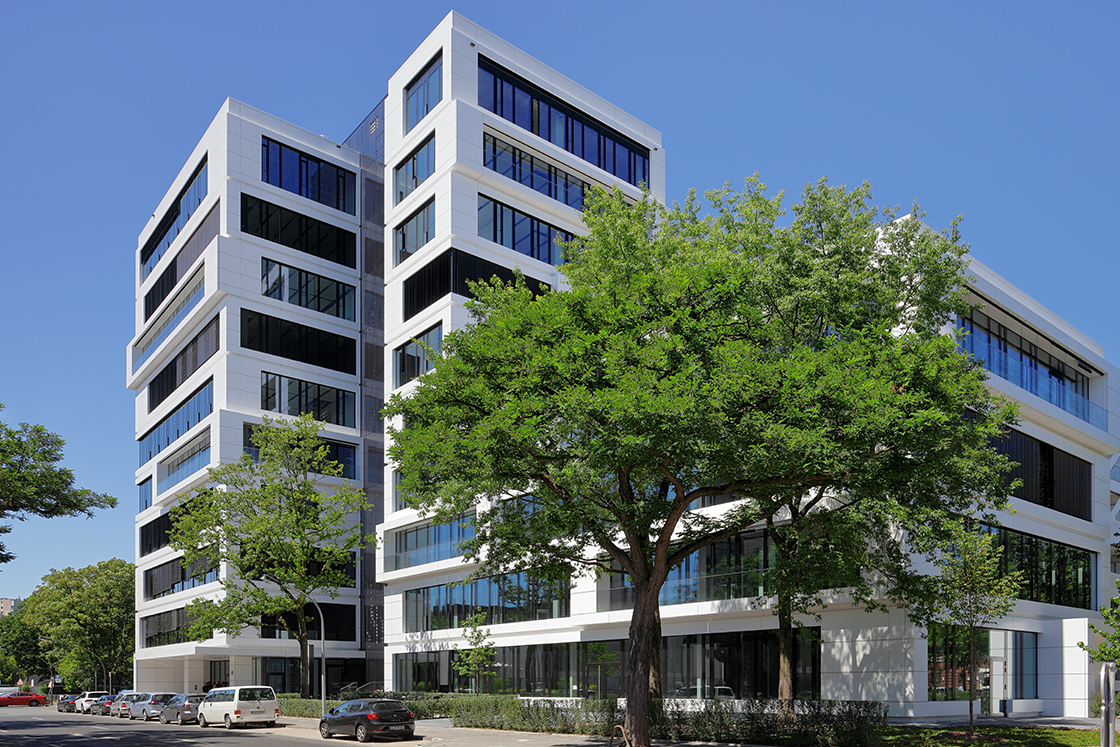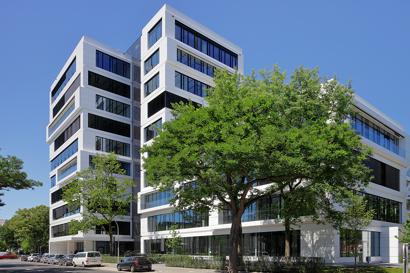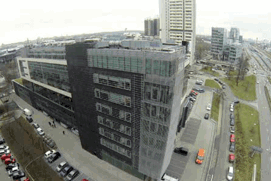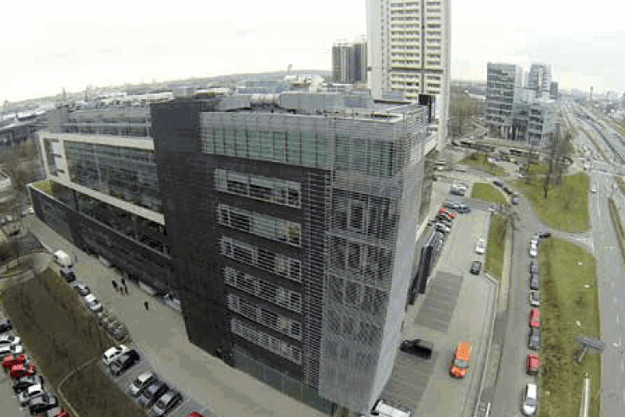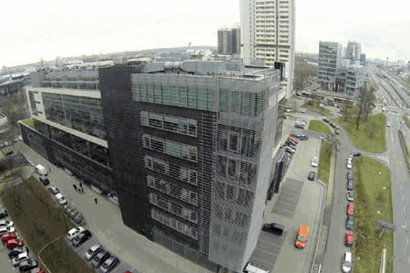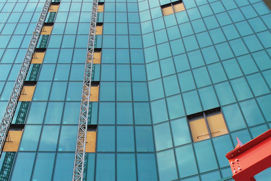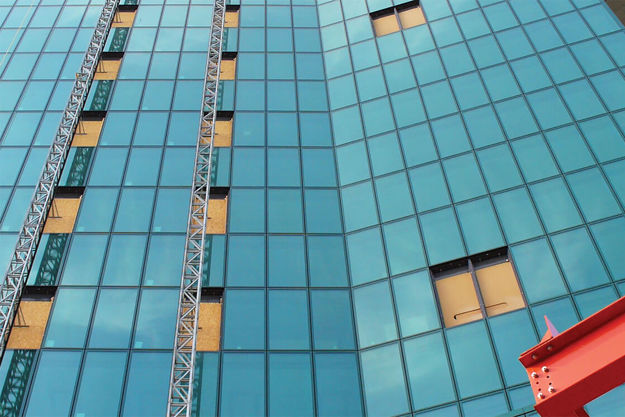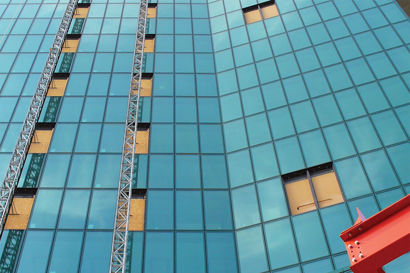Terminal units such as fan coil units, climate panels and induction units are particularly popular in HVAC systems for larger buildings. There are some good reasons for that; they don’t take up precious floor space, they can be accessed for service or maintenance, they are simple to connect to the HVAC system and they can be used for heating, comfort cooling, or both.
To achieve high indoor comfort of the heating and/or cooling provided by the Terminal units, it is important to have a proper hydronic balance, reliable control valves and accurate room temperature controllers. This is where Danfoss comes in.
Our Pressure-Independent balancing and Control Valves (PICV) ensure proper system hydronic balance, both in full load as well as partial load conditions. Once equipped with a matching actuator, they function as control valves at the same time.
If both heating and cooling are required and a four-pipe system is used, our robust changeover valves provide a compact solution, eliminating separate balancing and control valves for heating and cooling.
We also offer the more traditional manual balancing valves and motorized control valves. This combination can be used where three-way control valves are used, and a constant flow system is achieved as a result.
Danfoss room thermostats offer a simple standalone solution to control the room temperature. They are connected to the control valves and ensure a stable room temperature and optionally fan speed selection and time scheduling.
How we can help you
Complete product portfolio
Compact solutions
Fewer components needed
Easy and fast commissioning
Increase energy efficiency

Danfoss pressure independent balancing and control valves documentary
Hear all about the benefits of pressure independent balancing & control valves (PICV) and why have Danfoss customers converted from conventional balancing solutions to the PICV.
Related products
-
if (isSmallPicture) {


 Manual balancing valves
Manual balancing valvesManual balancing valves provide a static, basic balancing solution for many HVAC applications. The valves limit the flow through different parts in heating, cooling and domestic hot water systems. Since manual balancing valves can not react to changing conditions, the valves are recommended to be used in constant flow systems.
-
if (isSmallPicture) {


 Motorized control valves and actuators
Motorized control valves and actuatorsMotorized control valves ensure perfect control and efficiency for every building and application. Danfoss Motorized Control Valves (MCV) for district heating and cooling, HVAC and central heating systems ensure stable and accurate control of water, glycol mixtures and steam.
-
if (isSmallPicture) {


 Actuators for PICVs
Actuators for PICVsTo take advantage of the combined balancing and control features of Danfoss AB-QM it has to be equipped with actuators controlled by room thermostats or a Building Management System. Danfoss offers a broad range of actuators varying from thermal on-off to digital step motor actuators with bus communication.
-
if (isSmallPicture) {


 AB-QM Pressure Independent Control Valves (PICV) DN15 - DN250
AB-QM Pressure Independent Control Valves (PICV) DN15 - DN250AB-QM Pressure Independent balancing and Control Valves (PICV) provide both a control functionality and dynamic balancing solution for HVAC heating and cooling systems. PICVs are designed for various types of terminal units, Air Handling Units (AHU), chillers and provide high indoor comfort and energy efficiency in public and commercial buildings.
Learning
-
if (isSmallPicture) {


 How to balance HVAC systems in “Shell and Core buildings”
How to balance HVAC systems in “Shell and Core buildings”Shell & Core buildings – larger buildings split in smaller zones for rental purpose – such as office buildings or shopping malls are rapidly gaining in popularity. The design and commissioning of the HVAC system in such buildings requires another approach. If this is not taken into account issues like a long handover time, an over-dimensioned and unreliable system will occur.
-
if (isSmallPicture) {


 Types of hydronic balancing: Auto-balancing
Types of hydronic balancing: Auto-balancingAuto-balancing can be used in addition to or as an alternative to static or dynamic balancing. Auto-balancing solutions use intelligent digital system control to ideally implement complete hydronic balancing without complex pre-calculations. Danfoss’ solution is suitable for systems with up to 20 radiators or heating circuits, i.e. primarily for detached and semi-detached houses.
-
if (isSmallPicture) {


 Basics of hydronic balancing and types of hydronic balancing
Basics of hydronic balancing and types of hydronic balancingHydronic balancing is one of the most important measures for optimizing heating systems. Although all experts are aware of this measure, it is still difficult to draw clear distinctions between its variants – static, dynamic and auto-balancing.
-
if (isSmallPicture) {


 Types of hydronic balancing: Dynamic hydronic balancing
Types of hydronic balancing: Dynamic hydronic balancingDynamic hydronic balancing keeps the water flows and differential pressure of the heating system constant throughout the building under all load conditions and offers high energy saving potential, especially in large buildings.
-
if (isSmallPicture) {


 Types of hydronic balancing: Static hydronic balancing
Types of hydronic balancing: Static hydronic balancingWith static hydronic balancing, the mass flows are regulated manually, via pressure-dependent valves. Here, the mass flows are calculated and set exclusively for full load cases – efficiency-optimized heating water distribution is therefore only aimed at for the maximum utilization of the heating system
Case stories
-
if (isSmallPicture) {


 HVAC flexibility & Energy monitoring in EDGE Amsterdam West multi-tenant healthy & smart office
HVAC flexibility & Energy monitoring in EDGE Amsterdam West multi-tenant healthy & smart officeBuilding: Office
Application: Hydronic balancing and remote control of 4-pipe heating/cooling change-over system.
Challenge: Gaining BREEAM credits for energy monitoring and ensure fast, fail free installation.
Solution: Digital NovoCon S actuator combined with AB-QM 4.0 PICVs and ChangeOver6 Energy. The combination balances the system hydronically, allow remote access via a BMS and provides actual energy consumption data per climate panel during both heating and cooling operation. -
if (isSmallPicture) {


 Outstanding HVAC flexibility after high-end office building renovation
Outstanding HVAC flexibility after high-end office building renovationBuilding: Office
Application: Hydronic balancing and remote control of 4-pipe heating/cooling change-over system
Challenge: Ensure a flexible to use HVAC system with DGNB sustainability certification
Solution: Digital NovoCon actuator combined with AB-QM control valves and NovoCon CO6 combined with ChangeOver6 as a combination balance the system hydronically, allow remote access via a BMS and control the room temperatures during both heating and cooling operation. -
if (isSmallPicture) {


 Smart HVAC control solution for the I-tower at WTC Amsterdam, the Netherlands
Smart HVAC control solution for the I-tower at WTC Amsterdam, the NetherlandsBuilding: Office
Application: Climate panels with a four-pipe change-over system for Heating and Cooling
Challenge: Establish a modern, innovative HVAC control system optimized for flexibility in (changing) usage of office space
Solution: Integration of Danfoss field devices with the Building Management System via BACnet bus-communication -
if (isSmallPicture) {


 High-end climate solutions in Waldorf Astoria by Hilton, Amsterdam, the Netherlands
High-end climate solutions in Waldorf Astoria by Hilton, Amsterdam, the NetherlandsBuilding: Hotel
Application: Hydronic balancing and control for radiator heating and fan coil cooling
Challenge: Establish top level comfort and minimum energy consumption for heating and cooling
Solution: Fan-coil units for cooling; 8 heating risers and radiators equipped with Danfoss products. -
if (isSmallPicture) {


 HVAC control at Katowice business centre, Poland
HVAC control at Katowice business centre, PolandKatowice Business Centre is a modern office building where Danfoss hydronic balancing solutions are used; AB-QM balancing and control valves in combination with revolutionary NovoCon® actuators.
-
if (isSmallPicture) {


 Energy comfort in Prime Tower, Zurich, Switzerland
Energy comfort in Prime Tower, Zurich, SwitzerlandThe Prime Tower in Zurich is a building of many records. With its 126 meters it is the tallest building in Switzerland with 36 floors and 40,000 square meters accommodating mostly offices. And with its more than 6,000 AB-QM valves it is also one of the biggest heating and cooling installations ever designed and installed by Danfoss.


